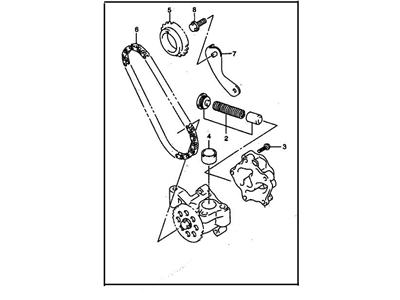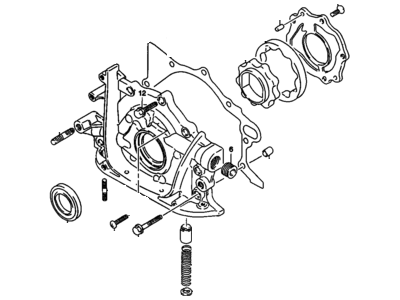
My Garage
My Account
Cart
Genuine Chevrolet Tracker Oil Pump
Oil Fluid Pump- Select Vehicle by Model
- Select Vehicle by VIN
Select Vehicle by Model
orMake
Model
Year
Select Vehicle by VIN
For the most accurate results, select vehicle by your VIN (Vehicle Identification Number).
5 Oil Pumps found
Chevrolet Tracker Oil Pump
The Oil Pump in Chevrolet Tracker automobiles is considered vital for the smooth running process of the internal combustion engine through the circulation of oil at high pressures to bear the loads on small items such as bearings and pistons. Some of the types of oil pumps include gear, trochoid, and vane pumps that are used in different Tracker models; nevertheless, mechanical pumps mostly take up most of the places due to their reliability. Oiling system in an automobile include pumping of oil from the sump, passage through the filter and cooler, and circulation of the oil at necessary pressure required for the running of the engine. High-performance Tracker engines may demand superior techniques of lubrication that includes the dry sump systems for the circulation and pressure of oil. This can be as simple as changing the oil filter or other such lubricants consistently thus eliminating system blocks on the engine.
Each OEM Chevrolet Tracker Oil Pump we offer is competitively priced and comes with the assurance of the manufacturer's warranty for the part. Furthermore, we guarantee the speedy delivery of your orders right to your doorstep. Our hassle-free return policy is also in place for your peace of mind.
Chevrolet Tracker Oil Pump Parts Questions & Experts Answers
- Q: How to remove and install an oil pump in SOHC engine on Chevrolet Tracker?A:Take out the Timing Belt, tensioner, crankshaft sprocket and belt guide. Pull the Oil Pan off and remove the oil pickup tube. Remove the alternator bracket. Undo dipstick tube bolts and take it out of engine front case. Take off front cover to block bolts and separate front cover from engine carefully. Disconnect cover from rear of case and remove inner/outer oil pump gears. Crankshaft oil seal must be removed from front case. Pressurizing valve retainer with plunger spring should be taken out too. Thoroughly clean all parts removing any trace of old gasket material on sealing surfaces .Visually examine these parts for wear ,cracks or other damage.Comparing parts as necessary.Installation of the outer and inner gears of the oil pump is followed by measuring their clearances.Comparisons between clearances and specifications are made.Measurement is done also on free height relief valve spring.Replacement should be made in areas where necessary.The pump cavity is then filled with petroleum jelly before installation of its cover.Its new crankshaft's front oil seal will then be replaced.Pressure relief valve components are installed.Finally,positioning the front cover using a new gasket.Bolts are put back in their original locations.On reversal order reinstall remaining parts.Add oil, start the engine, and Remember to check oil pressure and leaks.















